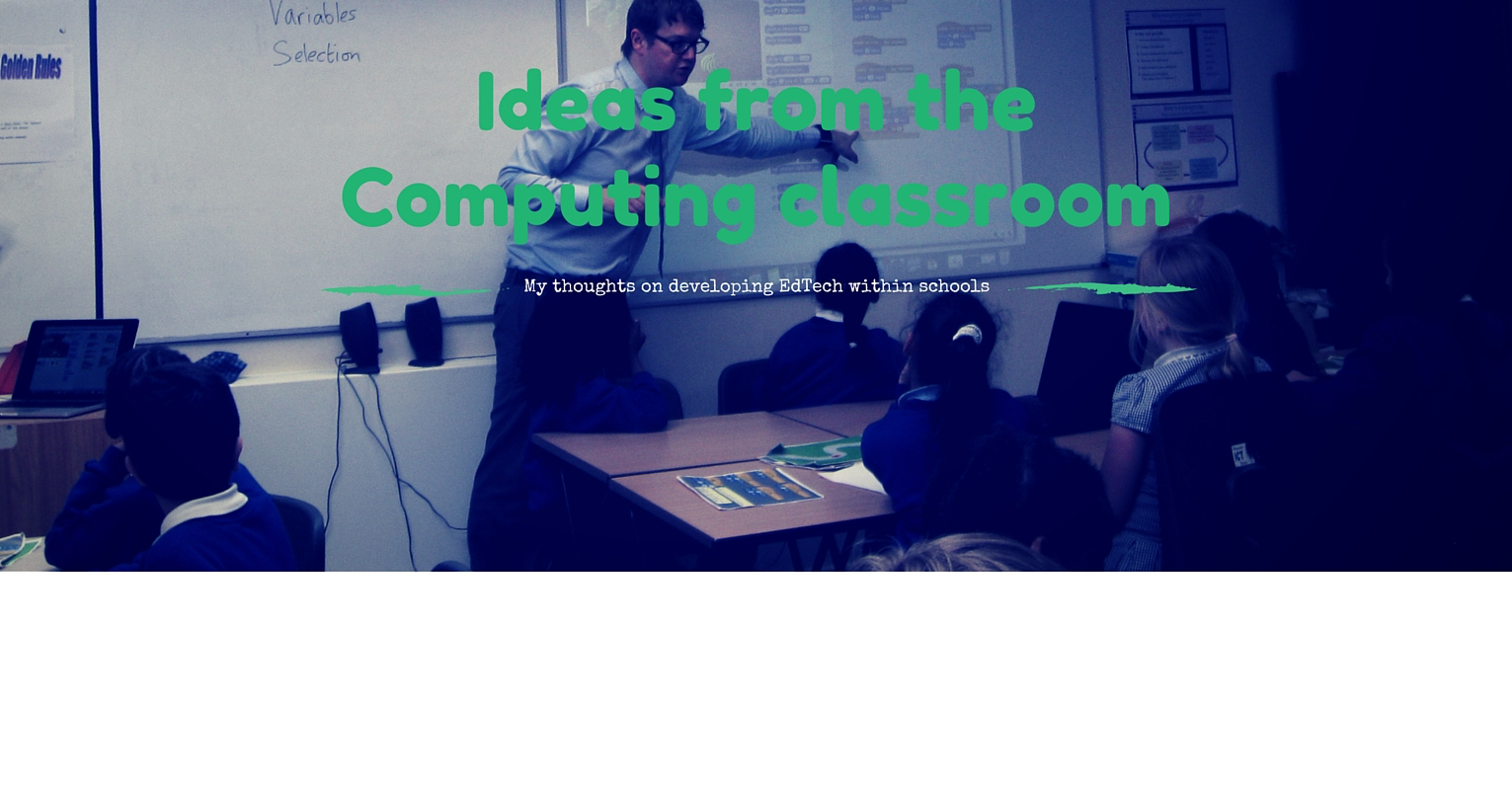Scratch Primary Progression
Note: This post is best read through a desktop computer rather than a mobile device. This will enable you to view the Scratch projects.
Scratch is probably the most effective and commonly used programming software used in Primary schools. If you haven’t come across Scratch, it is basically a visual programming language, used to easily create games, animations and simulations. The range of things that you can do with Scratch is immense and provides an ideal stepping stone to the more advanced world of computer programming.
You can download various versions of the software or access Scratch 2.0 online, through a web browser such as Google Chrome or Firefox. I have pupils creating their projects through the online version and they then save them to our generic account. However, I would ideally recommend pupils creating their own, individual accounts. This could either be done with their parents at home or with you in class. If your pupils don't have their own email address, you could use one class Gmail address to create your pupils' accounts. This video shows you how. As always, ensure that you have gained necessary parental consent before you create any online accounts for pupils though. Also, bear in mind that if you are using a shared Scratch account, pupils can view each other’s work and could accidentally delete each others projects!
***UPDATE: Since originally writing this post, Scratch have now added Scratch Teacher Accounts. This makes it easier to create accounts for groups of students and to manage your students’ projects and comments. More information about Scratch Teacher accounts here.
***UPDATE: Since originally writing this post, Scratch have now added Scratch Teacher Accounts. This makes it easier to create accounts for groups of students and to manage your students’ projects and comments. More information about Scratch Teacher accounts here.
Scratch in EYFS/KS1
If you have access to iPads, younger pupils should be given the opportunity to program using the iPad app version, Scratch Jnr. It is less intensive than the desktop version and it's simpler user interface, means that even pupils in EYFS should be able to create something with relative ease.
In unit 2.2 of my Computing scheme of work, pupils use Scratch Jnr to program an informative animation based on a topic or theme. The detailed tutorial video which accompany's the unit, shows you how to do it...
This could link to any current topic that pupil's are studying. For example,
Reception class created some Space animations. Here is what one groups finished project looked like...
Even pupils in Nursery class were able to program a simple animation to show what they had learnt during their 'healthy eating' topic...
Scratch in upper KS1/Lower KS2
Sprite Conversations
Once pupils are ready to move on to the PC version of Scratch, a nice, simple activity for them to start off with, is to program 2 'sprites' (characters) to have a conversation. I originally came across this idea on Phil Bagge's excellent website here. I find that using the 'two person conversation algorithm planner' by Gary Setchell really helps. Also providing a clear cross curricular focus helps keep pupils engaged. In the example below, Year 3 were studying Ancient Egypt and had been learning about Lord Carnavon and Howard Carter (Lord Carnavon being the person who financed Carter's search for King Tutankhamun's body). The pupils loved programming the conversation that they imagined would have taken place when Howard Carter asked Lord Carnavon to continue financing the search...As part of their Ancient Greece topic, pupils in Year 3 also programmed a conversation involving the two Ancient Greek characters, Icarus and Daedalus...
In Year 4, pupils really enjoyed applying what they had learnt in their French lessons. After importing a relevant stage and two sprites, they then programmed their conversation - this time in French! To help them they also used the Google translate tool when they weren't sure of any exact translations!
Animations
Pupils should them move on to incorporating some of the other blocks (e.g. 'motion' blocks) and perhaps experiment with using the 'broadcast block' as well (this will enable them to link together different scenes). This could be done through programming a simple animation such as this one...
You can see here that pupils are also learning about the importance of using repetition (a key programming concept that pupils need to learn the importance of).
Scratch in Upper KS2
I have previously blogged here about using Scratch to program interactive quizzes. Pupils love this activity. The activity is great for older pupils as it introduces them to the more complex programming concepts of selection and variables. However, I have even had Year 2 pupils make them with equal success too! Here is an example one made by a Year 5 pupil. Have a go!
'De-bugging'
The beauty of saving projects to an online Scratch account is that you can 'remix' other people's projects. If you have an account, why not log in and then press the 'remix' button on this project here. Can you identify the mistakes within the script and then fix it so that it runs correctly? Challenge your pupils to create their own, improved version of it!
If you would like to learn more about Computer Programming in the new curriculum, I am available to run inset training to support your staff. More information can be found here









0 comments